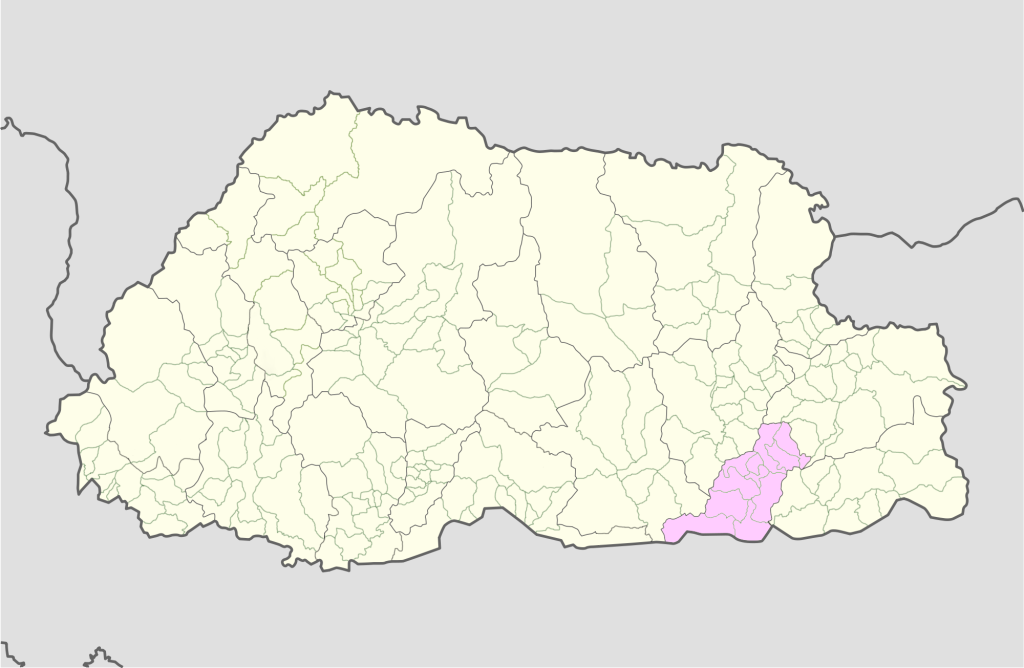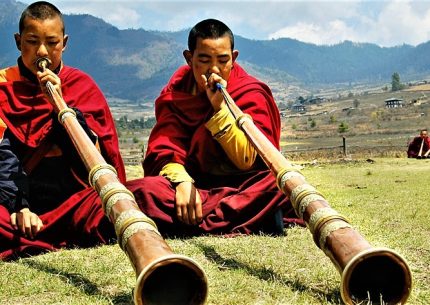
The district of Pemagatshel gives you a taste of everything that Bhutan is famous for. In the local language, the name means, “the Lotus Garden of Happiness”. Located in southeastern Bhutan, it is spread over an area of 517.8 sq. km. Its geography is marked by a difference in altitude which ranges from 1000m to 3500m. There are many reasons to plan a trip this most famous tourist place to visit in Bhutan, from the rich handicraft industry to the folk culture.
One of the things that Pemagatshel is famous for are its artists and weavers. Two kinds of religious instruments are manufactured here, Jalings (which have a strong resemblance to Oboe) and Dhungs (which are similar to long trumpets). Both of them are always in high demand throughout the country. It is not just the musicians though, who make this district proud. The weavers are also popular, with two of their most prized items being Kiras (a kind of traditional dress worn by women) which is made from raw silk, called Bura. No one who comes to this district forgets to taste the Tsatsi Buram. It is made from sugarcane and is greatly enjoyed by people throughout the country.
Pemagatshel is also dotted with various tourist attractions which make for exciting sightseeing and exploration. One of the most famous places to see in Pemagatshel is Yongla Goemba. It sits on a mountain shaped like a dagger. Among the many interesting facts about it, one is that it was used as a base of operations by the Trongsa Poenlop (feudal lord) Jigme Namgyel, from where he launched attacks on British troops. The monastery was severely damaged during the earthquake in 2009 but was renovated by King Jigme Khesar Namgyel Wangchuk. While the history and architecture is undoubtedly interesting, it is the location that catches attention of both first time visitors and others. Other famous places to see in Pemagatshel are the Kheri Goemba temple and Lektiri Goemba which goes back to the 15th century in Goemba Singma village.
Fairs and festivals are other reasons to plan a trip to this beautiful district. The most famous of these is of course, the Tshechu. It is a festival common to many districts, and is held over a three day period. Mask dances called chaam are very popular, as are the local dance performances. One of the most famous folk songs of this district is the Ausa. It is sung on special occasions, an example of which is the departure of family members, relatives and friends.




